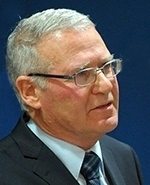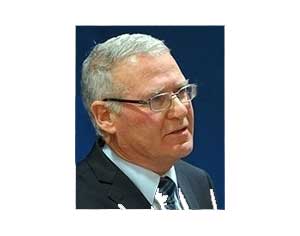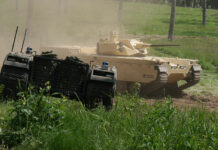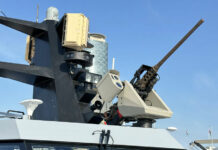 One week has passed since the attacks near Damascus, which according to American sources destroyed advanced Fateh-110 surface-to-surface missiles making their way from Iran to Hizbollah in Lebanon. Now that the dust has settled and it seems as if the strike was contained – there was no immediate response either from Syria or Hizbollah – one can point to some initial conclusions.
One week has passed since the attacks near Damascus, which according to American sources destroyed advanced Fateh-110 surface-to-surface missiles making their way from Iran to Hizbollah in Lebanon. Now that the dust has settled and it seems as if the strike was contained – there was no immediate response either from Syria or Hizbollah – one can point to some initial conclusions.  At the same time, it is entirely possible that we are in the midst of a greater crisis, both in terms of a belated reprisal and especially in terms of the probability that more red lines will be crossed and that further attacks could lead to an escalation on the northern border. This essay assumes, as reported in foreign sources, that the Damascus attack was carried out by Israel.
At the same time, it is entirely possible that we are in the midst of a greater crisis, both in terms of a belated reprisal and especially in terms of the probability that more red lines will be crossed and that further attacks could lead to an escalation on the northern border. This essay assumes, as reported in foreign sources, that the Damascus attack was carried out by Israel.
- For the first time in a decade Israel took action against the weapons supply route operated by Iran and Syria to Hizbollah. Until 2000, President Hafez al-Assad limited the supply of arms to Hizbollah; the most potent weapons he supplied – or allowed the Iranians to supply – were short range Katyushas. His son Bashar Assad, on the other hand, has provided Hizbollah with every form of advanced modern arms. The financing, knowledge, and training almost all hail from Tehran; some of the weapon systems are Iranian-made, others are manufactured in Syria (such as various rockets and the M-600 missiles, the Syrian version of the Fateh-110), and still others come from Russia. The weapons transported from Iran arrive by air to the Damascus international airport, and from there are shipped to Lebanon. Despite the legitimacy for Israeli action bestowed by Security Council Resolution 1701 in 2006, prohibiting the supply of weapons to Lebanon to any body other than the Lebanese government, Israel has never taken action against such shipments, apparently because of cost-benefit considerations and the understanding that the chances for escalation vis-à-vis Syria (with which Israel has shared a calm border for decades) and Hizbollah are high and do not justify the possible benefit. Still, when late in the last decade it became clear that Bashar Assad had broken every arms supply rule in the book, Israel identified four weapon systems that it sought to prevent reaching Hizbollah, even at the risk of escalation: advanced aerial defense systems, long range surface-to-surface missiles, the Yakhont shore-to-sea missile, and chemical weapons.
- The Israeli operation demanded impressive intelligence and operational capabilities: intelligence penetration of Iran and Hizbollah secrets and an attack on a sector protected by some of the densest and most advanced aerial defense systems in the world. At the moment it seems that Israel’s intelligence and strategic assessments about the enemy’s response were correct. The calculated risk Israel took has proved itself. It seems that Israel’s assumption that its deterrence is very strong vis-à-vis all the players, given a situation in which the Syrians, Hizbollah, and Iran have different priorities and therefore will not risk an immediate military confrontation, proved correct. Israel has also adopted the method that proved itself in 2007-8 and did not claim responsibility for the attack, leaving the Syrians plausible deniability. In addition, the targets were not Syrian assets, making it easier for the Syrians to contain the damage, and the attack did not occur on either Iranian or Lebanese territory, allowing these two actors – the weapon systems supplier and the customer – free of obligation for an immediate response.
- Each of these three enemies of Israel is preoccupied with more important challenges than responding to an Israeli attack. The Syrian regime is fighting for its life against the internal opposition, already in control of 50 percent of Syrian territory. In the past month, the regime has made some strides against the rebels and is managing to keep the conflict internal, in which the army has a built-in advantage over the insurgents; the regime is eager to maintain this success. External intervention and a confrontation with Israel are a danger to the regime, bearing the potential for toppling it. Hizbollah too prefers survival of the Syrian regime, which serves as a bridge to Iran and as a strategic rear. Its soldiers are fighting in Syria; opening another front with Israel is not desirable and would damage its legitimacy in Lebanon, which has suffered due to its involvement in the Hariri murder and because it dragged Lebanon into the war with Israel in 2006 and is now actively supporting Assad’s regime. Iran too will find it hard to respond, as it has never admitted supplying advanced weapons to Hizbollah. Furthermore, the survival of Assad’s regime is very important. Above all, Iran’s supreme interest is to protect its military nuclear program and maintain Hizbollah as its forward arm to respond to an attack on the nuclear facilities.
- Yet even if there is no immediate massive response, Hizbollah, Iran, and at times even Syria sometimes display patience, keep their account ledgers open, and choose a delayed response, preferably far from the local arena where they risk escalation and Israel has good defensive capabilities. Another type of response is deploying small terrorist organizations or executing a limited operation in the Israeli-Lebanese-Syrian sector without assuming responsibility. Israel can contain such operations and avoid a response because the Israeli action that started the cycle of retaliation was highly successful – provided the response doesn’t take a toll requiring further escalation.
- The Israeli attack enjoys a relatively high degree of legitimacy, from Western recognition of the move as one of self-defense (President Obama) to the Sunni world’s pleasure at the distress of the Syrian and Iranian regimes and Hizbollah. The satisfaction with the attack in the Gulf and Saudi Arabia was hard to hide, and even Egypt and Jordan sufficed themselves with pro forma denunciations and diplomatic lip service. An attack on the radical axis, no matter which component – an axis currently butchering tens of thousands of Syrian citizens – is now more legitimate than ever. Nonetheless, it is important to note that Israel has not intervened in the civil war and even indicated to Syria that it has no intention of aligning itself with the opposition to the regime. Israel did not directly damage Syrian assets, only Hizbollah and Iranian assets that pose a risk to Israel’s security.
- The American angle: Israel did not ask for a green light from the United States before the attack. Still, the level of coordination and the strategic understandings between the two nations are profound, and there is no doubt that that each side has defined its critical interests to the other and described the causes that will require action, the limits of the action, and its own limitations. While some claim that the action was Israel’s attempt to maneuver the United States into intervening in Syria, this is without foundation. Israel acted against Iranian and Hizbollah elements in Syria posing a direct danger to Israel’s security. There is also no verification of reports that dozens of the regime’s commandos were killed or injured. Still, critics of President Obama can point to the Israeli operation as an example of an appropriate response to a red line being crossed and the weakness of the claim made by NATO and the Pentagon that the Syrian aerial defenses are significantly stronger than those of Libya or Iraq
- The Russian angle: The Russians, not the Iranians, are the suppliers of two of the four systems defined as red lines: advanced aerial defense systems such as the SA-17 and the advanced Yakhont shore-to-sea missile. If these Russian systems, supplied to Syria on condition they would not be transferred to another end user, were to have been attacked on the Lebanese side, the Russians would have been placed in a very embarrassing position. Among the risks of attacking in Syria is the possibility that the Russians, who took an unfavorable view of the operation, will release long range aerial defenses such as the S-300 for export to Syria.
- One objection to the recent attack is that some of the weapon systems constituting a red line are apparently already in Hizbollah hands. However, quantities matter. Hizbollah certainly does not have tens of thousands, or even thousands, of long range missiles. If at issue are several dozen or even a few hundred missiles, there is importance in reducing the number of enemy missiles to a minimum. As in Operation Pillar of Defense in Gaza, many enemy missiles are destroyed before they are launched and others are shot down by anti-missile defense systems. A large number of missiles in enemy hands allows saturation of anti-missile defense systems in Israel and provides Hizbollah more breathing room. What was destroyed in Syria will make a more extensive future confrontation with Hizbollah easier to manage. Also, the future costs of reviving the smuggling route will represent a logistical, operational, and intelligence burden for Iran and Hizbollah, thereby slowing the pace of Hizbollah force construction.
- What is the impact on the conflict with Iran? There are two strategic schools of thought: One says “Iran first” and that all priorities and resources should be directed at this effort, including the willingness to pay strategic costs in other arenas, whereas another says “Syria and Hizbollah first,” based on the recognition that it is possible to deter Iran and demonstrate Israel’s resolve and capabilities when it comes to crossing red lines and weaken Iran’s ability to respond by attacking its allies and first line of fire. It is unclear if these broader strategic considerations were examined before the attack, but in practice, results suggest that the second school of thought has proven itself. It remains to be seen whether Iran has internalized the message of Israel’s resolve on the one hand and the weakness of its allies on the other.
- Finally, the episode is likely not yet over, neither tactically nor strategically. In the short term, a high level of vigilance is required to watch for a closing of accounts by a limited and/or delayed response, both locally in the northern sector and abroad. Strategically, Israel’s decision makers will have to decide whether to continue taking action against Hizbollah’s acquisition of advanced critical weapon systems. When Israel considers its next operation, it will have to ask whether the strategic circumstances still allow freedom of action with little risk to Israel, or the cumulative incidents will necessarily lead to unwanted escalation. The assumption of relative freedom of action is an illusion, because freedom of action is a consumable asset. An inductive assumption – if there was no response to two incidents there will likewise be no response to future incidents – is liable to prove erroneous. There is cumulative pressure on the leaders of the other side to react. This pressure might generate a breaking point and an extended response, followed by dangerous escalation.

















